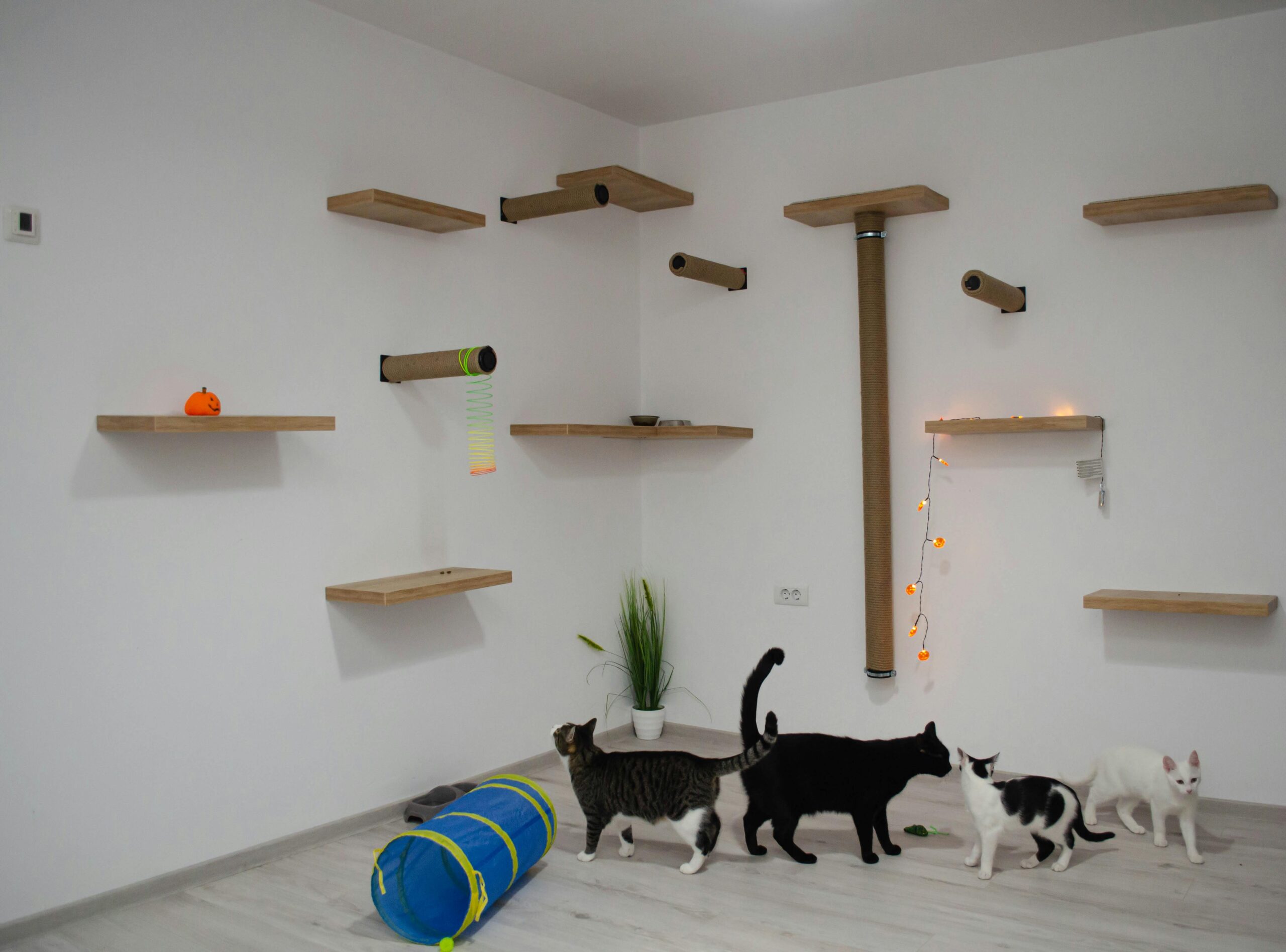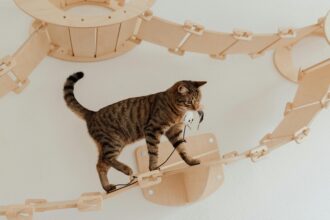Cats are intelligent, curious creatures that thrive on mental stimulation. While naps in the sun and the occasional window watch are part of their daily rhythm, they also crave challenges especially when they’re left alone for long stretches. Enter puzzle toys: a fantastic way to keep your cat’s brain engaged, prevent destructive behaviour, and provide healthy outlets for natural instincts like hunting, batting, and pawing. Whether you’re raising a lively kitten or trying to curb biting, scratching, or chewing, puzzle toys are an essential part of behavioural training and enrichment.
In this guide, we’ll explore the benefits of puzzle toys, how they support positive reinforcement, and review some of the best options to keep your cat mentally sharp and happily occupied.
Why Do Cats Need Puzzle Toys?
Puzzle toys are more than just a fun distraction. They:
- Encourage natural foraging and hunting behaviours
- Help manage stress, boredom, and aggression
- Reduce chances of litter box issues caused by anxiety or inactivity
- Prevent destructive behaviour like scratching furniture
- Aid in redirecting behaviour away from problem habits
These toys are also useful tools in kitten training and can complement techniques like clicker training or the use of training treats.
What to Look for in a Good Puzzle Toy
The best puzzle toys for cats share a few key features:
- Adjustable difficulty for long-term use
- Safe materials (non-toxic plastic or BPA-free rubber)
- Easy to clean
- Encourages interaction through hiding food, treats, or movement
- Can be used solo or during interactive play
Look for toys that match your cat’s personality. A shy cat might prefer toys that move subtly, while a bold hunter will enjoy a more complex challenge.
Top Puzzle Toys to Stimulate Your Cat’s Brain
1. Catit Senses 2.0 Digger
This clever feeder encourages your cat to “dig” for kibble or treats using their paws. The tubes are different heights, making it a mild challenge that’s perfect for daily feeding routines. It slows down fast eaters while giving them a dose of brainwork.
Great for: Litter box training support (slower digestion), food-obsessed cats, indoor boredom.
2. Trixie 5-in-1 Activity Board
With multiple puzzles on one board, this toy keeps things fresh. From fishbowl-style cups to sliding compartments, your cat will engage their senses and paws to uncover hidden rewards.
Great for: Smart, food-motivated cats; reducing chewing and biting tendencies.
3. Doc & Phoebe’s Indoor Hunting Feeder
A must-have for cats that love to chase. This set comes with small, mouse-shaped feeders you can fill with food and hide around your home. It mimics the thrill of the hunt while keeping your cat moving.
Great for: Night-time boredom, cats that need more interactive toys than stationary puzzles.
4. Petstages Rainy Day Puzzle & Play
This toy combines sliding panels and hiding holes to keep your cat guessing. It’s designed to reward with treats or small toys, ideal for short but engaging sessions.
Great for: Kitten training, positive reinforcement, and bonding time.
5. LickiMat Playdate or Soother
These mats aren’t traditional puzzle toys, but they provide stimulation through slow feeding. Spread wet food or soft treats and let your cat lick away. The texture and scent engagement are mentally enriching.
Great for: Anxious cats, aggression management, and redirecting behaviour like overgrooming or excessive meowing.
6. Cat Amazing Classic Treat Maze
Made from eco-friendly cardboard, this maze has multiple compartments where you can hide treats or small toys. It’s a quieter puzzle that still challenges problem-solving skills.
Great for: Eco-conscious owners, cats that are easily overstimulated.
7. Nina Ottosson Puzzle & Play Buggin’ Out
From a brand known for their dog puzzles, this toy offers a gentle challenge. Your cat must paw and nudge aside leaves to get to treats underneath.
Great for: Cats new to puzzle toys, or as a way to transition to more complex training toys.
How to Introduce Puzzle Toys Successfully
Not all cats will take to puzzle toys right away. Use positive reinforcement techniques to create a fun association.
- Start simple: Choose an easy toy and use training treats they love.
- Add scent: Rub tuna or catnip on the toy if your cat is reluctant.
- Supervise the first few uses: Show your cat how it works.
- Use clicker training: Click and reward when they interact successfully.
- Rotate toys: Just like humans, cats can get bored, so introduce new ones regularly.
If your cat shows frustration, pause and go back to basics. The goal is engagement, not stress.
Using Puzzle Toys in Behavioural Training
Puzzle toys are a powerful tool in your overall behavioural training plan. They help redirect problematic behaviour and reduce stress two common triggers of biting, scratching, or litter box issues.
For example:
- A cat that chews on cords can be distracted with a treat-dispensing toy.
- A kitten who bites during play can be redirected to a paw-based puzzle instead.
- An aggressive cat can benefit from calming toys like a LickiMat or puzzles filled with calming treats.
Combine puzzle time with other tactics like pet-proofing your home, offering appropriate scratch training tools, and using interactive toys for bonding.
When to Use Puzzle Toys
Puzzle toys are flexible and can be used:
- During meal times (especially for fast eaters)
- When you leave for work (to prevent boredom)
- Before bed (to burn energy and reduce nighttime zoomies)
- As a calm activity after a play session or leash training walk
They’re also fantastic to include in kitten training routines and to ease transitions like moving to a new home or introducing new pets.
Safety Tips for Puzzle Toy Play
- Always supervise your cat the first time with a new toy.
- Choose the right size, avoid toys that could be swallowed.
- Clean regularly to prevent bacteria build-up.
- Monitor for wear and tear, especially on cardboard or fabric toys.
- Don’t overuse food-based toys with calorie-dense treats.
Conclusion
Puzzle toys are one of the best ways to provide cats with the mental enrichment they need for a happy, balanced life. They promote positive behaviour, curb destructive habits, and offer an outlet for natural instincts in a healthy, constructive way.
Whether you’re managing aggression, helping with kitten training, or just looking for a way to make your cat’s day more exciting, puzzle toys can be a game-changer. Just remember, every cat is different. It may take a little trial and error, but once you find the right fit, your feline will thank you with purrs, play, and a lot less mischief.






